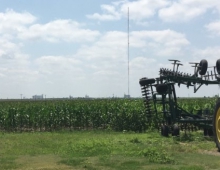
Internet2 Network Sets Record of 8.8 Gbps
Researchers of the super-fast Internet2 network unveiled on Wednesday their new networking speed record of 8.8 Gbps per second, nearing the Internet2's current theoretical limit of 10 Gbps, which is thousands of times faster than standard home broadband connections.
The speed record was set in February by a team from the University of Tokyo, the University of Amsterdam and other institutions. Data went from Tokyo to Seattle to Amsterdam to Chicago and back to Tokyo. The speed breaks the previous high of 7.99 Gbps, set in November.
Operators of Internet2 also announced thier plans to increase capacity by as much as 80-fold and enable researchers to perform tasks that require a high bandwidth.
Internet2 is currently used by several million university students, researchers and professionals around the world including more than 200 institutions in the U.S., but is generally inaccessible to the public.
It currently uses shared fiber optic cables run by Qwest Communications International Inc. The new network, Internet2 will have the cables all to itself, but Van Houweling declined to reveal the name of the contractor that will run the new netowork.
In the new network, operators will initially be able to transmit data using 10 colors, or wavelengths, of light over a single cable, giving the network a capacity of 100 Gbps. Eventually, Internet2 hopes to transmit on 80 wavelengths.
The new network should be in place by fall 2007, said Douglas Van Houweling, Internet2's Chief Executive at the nonprofit Internet2 consortium's twice-annual meeting in Arlington, Virginia.
Although the ability to send data using multiple wavelengths isn't new, Van Houweling said Internet2 will be deploying new circuits that can each interpret all 10 wavelengths.
Van Houweling said the developments are driven by new research needs. For example, astronomers are trying to link radio telescopes around the world, pooling data so they function as one. Van Houweling said the added capacity will also allow U.S. scientists to fully use the world's largest particle physics collider being built outside Geneva.
Internet2 has been in merger talks with another ultrahigh-speed, next-generation network, National LambdaRail, but the discussions didn't go any further, Van Houweling said.
Operators of Internet2 also announced thier plans to increase capacity by as much as 80-fold and enable researchers to perform tasks that require a high bandwidth.
Internet2 is currently used by several million university students, researchers and professionals around the world including more than 200 institutions in the U.S., but is generally inaccessible to the public.
It currently uses shared fiber optic cables run by Qwest Communications International Inc. The new network, Internet2 will have the cables all to itself, but Van Houweling declined to reveal the name of the contractor that will run the new netowork.
In the new network, operators will initially be able to transmit data using 10 colors, or wavelengths, of light over a single cable, giving the network a capacity of 100 Gbps. Eventually, Internet2 hopes to transmit on 80 wavelengths.
The new network should be in place by fall 2007, said Douglas Van Houweling, Internet2's Chief Executive at the nonprofit Internet2 consortium's twice-annual meeting in Arlington, Virginia.
Although the ability to send data using multiple wavelengths isn't new, Van Houweling said Internet2 will be deploying new circuits that can each interpret all 10 wavelengths.
Van Houweling said the developments are driven by new research needs. For example, astronomers are trying to link radio telescopes around the world, pooling data so they function as one. Van Houweling said the added capacity will also allow U.S. scientists to fully use the world's largest particle physics collider being built outside Geneva.
Internet2 has been in merger talks with another ultrahigh-speed, next-generation network, National LambdaRail, but the discussions didn't go any further, Van Houweling said.





















